New Rodeostat adapter for screen printed electrodes
In this post we describe a new Rodeostat SPE adapter which works with the ZP Hypervalue SPE's.

Screen printed electrodes (SPEs) are extremely useful electrochemical materials that can be used in place of the standard electrochemical cell for a wide-variety of electrochemistry applications, especially for teaching introductory electrochemistry methods and biosensor development. SPEs are affordable and disposable electrodes that are available in a variety of fabrication sizes and materials. SPEs are also available with different working electrode materials include carbon, platinum and gold as well as modified SPEs for specific applications.
We have used carbon SPEs with the Rodeostat open hardware potentiostat in some of our previous electrochemistry tutorials. In addition we have used a bismuth modified SPE for metal-testing and biosensors (glucose test strips) for chronoamperometry measurements.
There are a wide variety of screen-printed electrodes on the market, as overviewed in this PalmSens video. We generally use the Zimmer & Peacock Hypervalue carbon SPEs but we have also used carbon SPEs from Pine and Zensor. Other popular ones we haven't tested include screen printed electrodes from Gamry and Metrohm.
We currently stock two types of Zimmer & Peacock Hypervalue carbon screen printed electrodes in our online store. The ZP Hypervalue Carbon SPE was the first electrode we stocked. It is a small bare carbon electrode, great for most applications. The newer ZP Hypervalue 501 Carbon SPE has a minimized circular working electrode ideal for modifications e.g. dispensing small volumes directly onto the working electrode for biosensor preparation.
Rodeostat SPE adapters
We have previously developed SPE adapters for our Rodeostat potentiostat. These adapters (Type A, B and C) are for use with different SPE configurations e.g. pad spacing and electrode configuration.
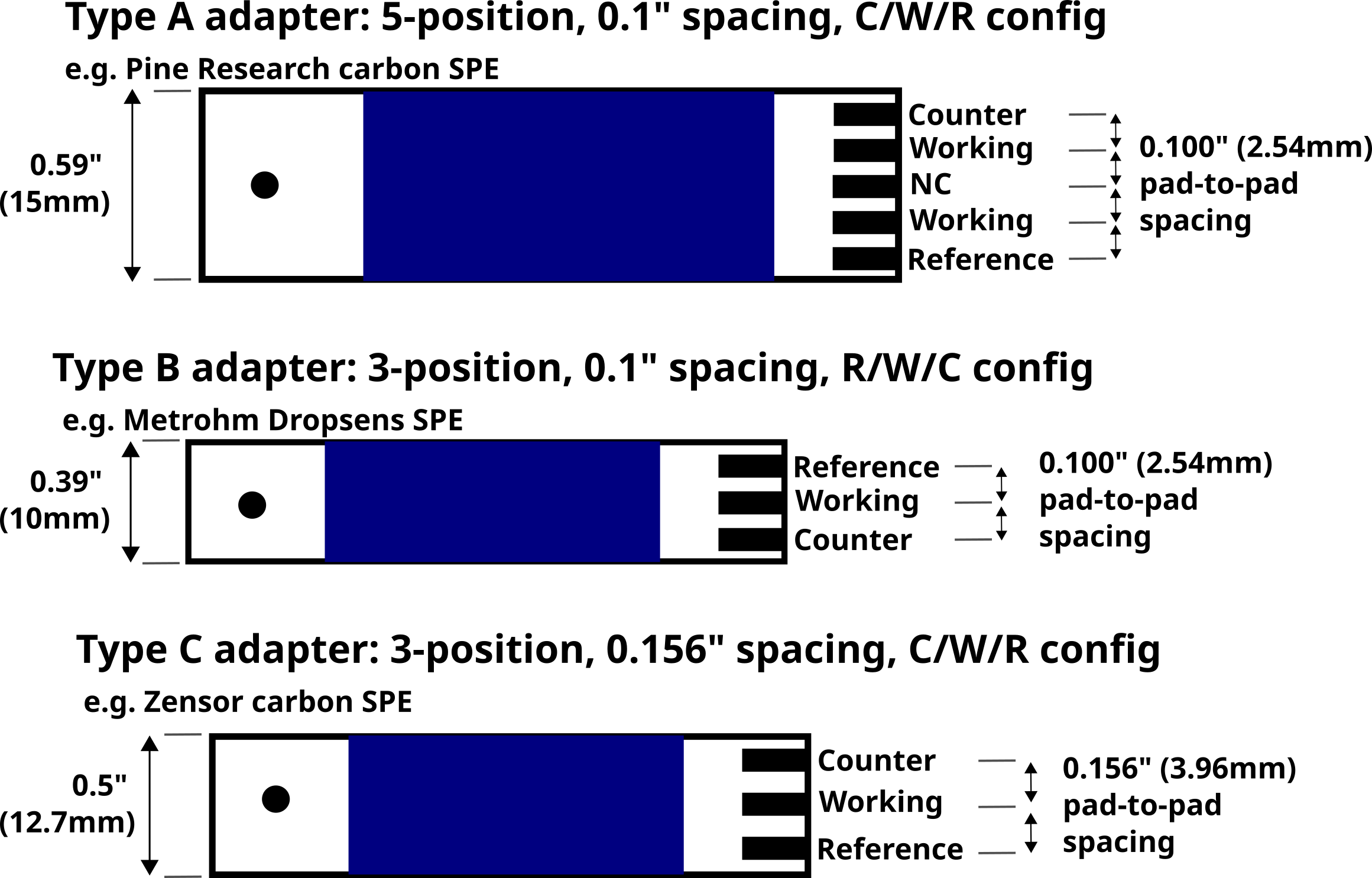

While these adapters work well, they are not tailored to any specific SPE thickness, and require using a "shim" (small piece of thick paper or card) to hold the electrode in place and make a good electrical connection.
Designing the new SPE adapter for ZP Hypervalue SPEs
As we are using the ZP Hypervalue SPEs, we wanted to make a Rodeostat adapter that would work specifically with the ZP Hypervalue SPEs and not require any additional shim. We were able to use the Type B adapter we had already developed as this configuration matches the ZP Hypervalue SPE electrode order (C/W/R) and 0.100" pad spacing. We designed a new 3D-printed housing specifically for these small size electrodes that will ensure the Hypervalue SPEs are held firmly in place, ensuring a good electrical contact.
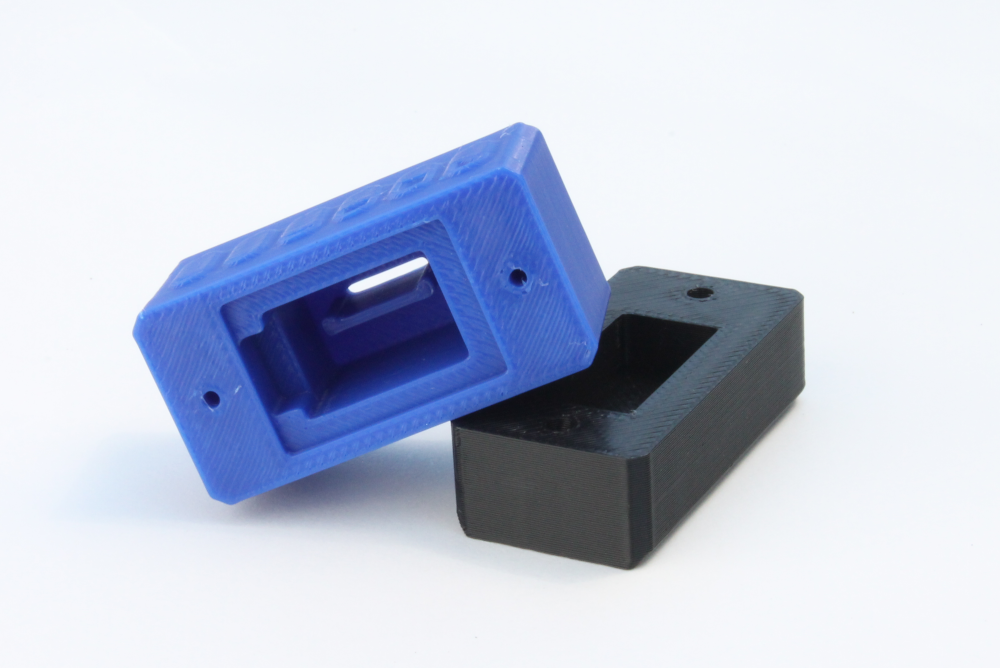
The type B card-edge connector sits in the adapter cap part, printed here in blue PLA. An internal overhang structure acts as a "shim" and fits inside the card-edge connector leaving enough space to accommodate the 0.3mm thick Hypervalue SPE. There is a slot in the front for the cap for inserting the SPE.
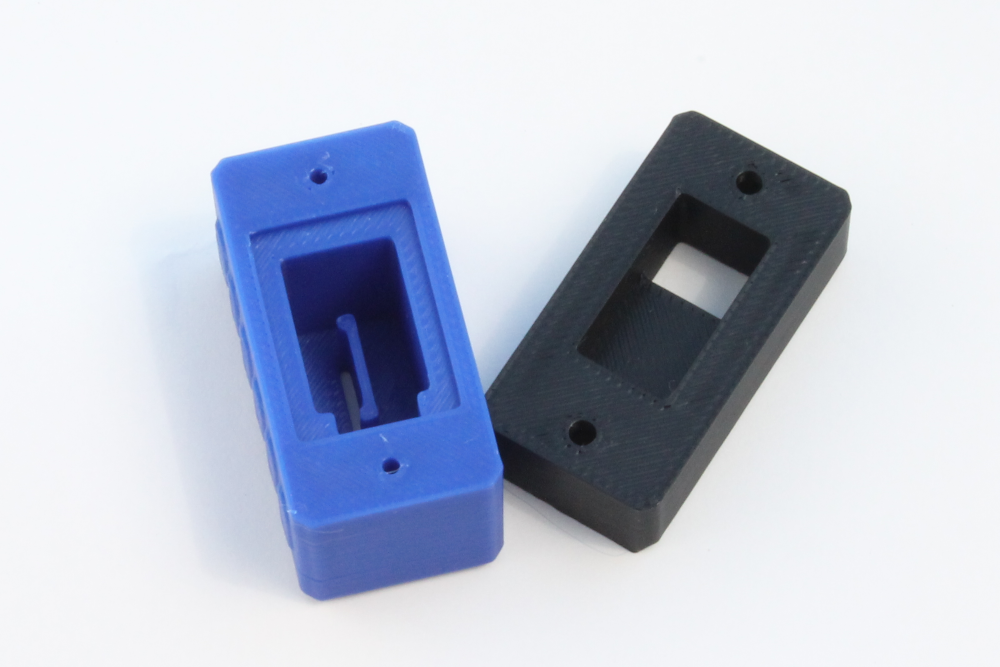
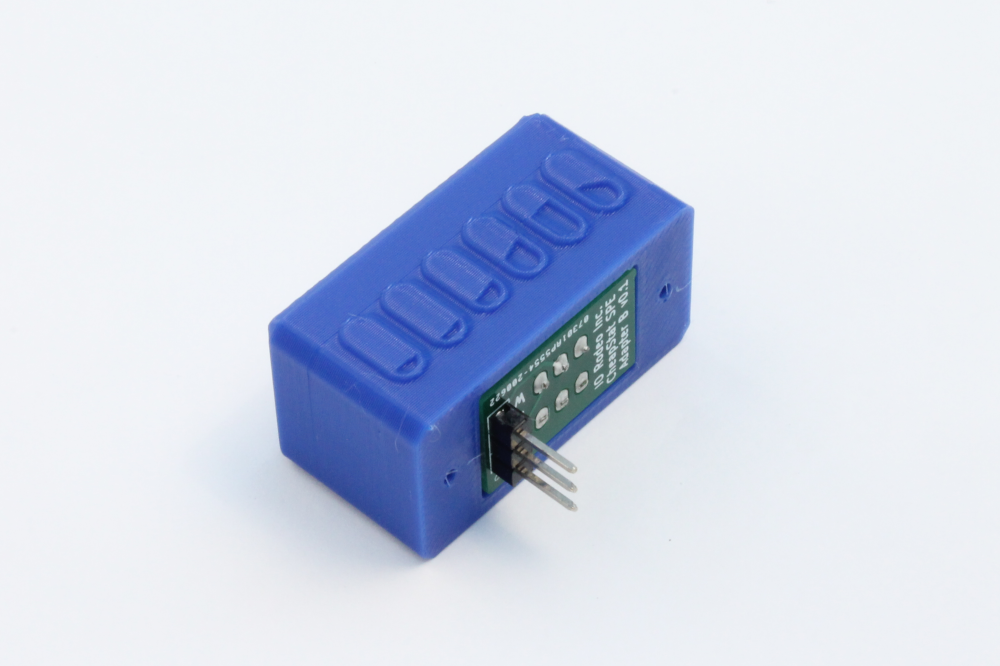
The base part (shown here printed in black PLA) is connected to the cap using 2 x self-tapping screws. There is a cutout for the 3-pin connector and cable. The cutout also provides a way to see the PCB labels indicating the Working (W), Reference (R) and Counter (C) electrode pins as shown in the image below.

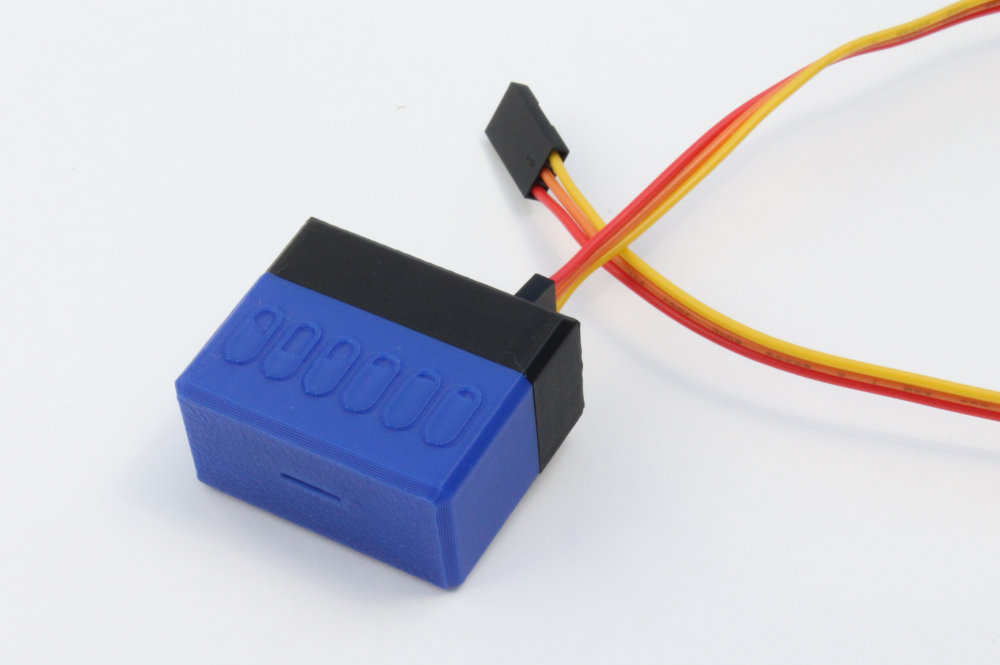
Electrochemistry with the Rodeostat, ZP Hypervalue carbon SPE and adapter
We tested the new adapter with a standard ferricyanide cyclic voltammetry experiment. There are lots of introductory electrochemistry tutorials online to learn about electrochemical techniques like cyclic voltammetry. The one linked below is from Zimmer & Peacock.
Introduction to Electroanalytical Techniques: Voltammetry, Potentiometry, Amperometry, EIS. Zimmer & Peacock YouTube Channel
Additionally, to learn more about low-cost potentiostats including the Rodeostat, check out the recently published Featured Publication at the top of this post!
A fresh 10mM potassium ferricyanide in 0.1M KCl solution was prepared and used for cyclic voltammetry (CV) with the new adapter connected to the Rodeostat. Both types of ZP hypervalue carbon SPEs were used. Approx. 80-100 µL of redox solution was pipetted onto the SPEs. We also ran a CV experiment with an electrochemical cell connected to the Rodeostat and 50 mL of the same redox solution for comparison.
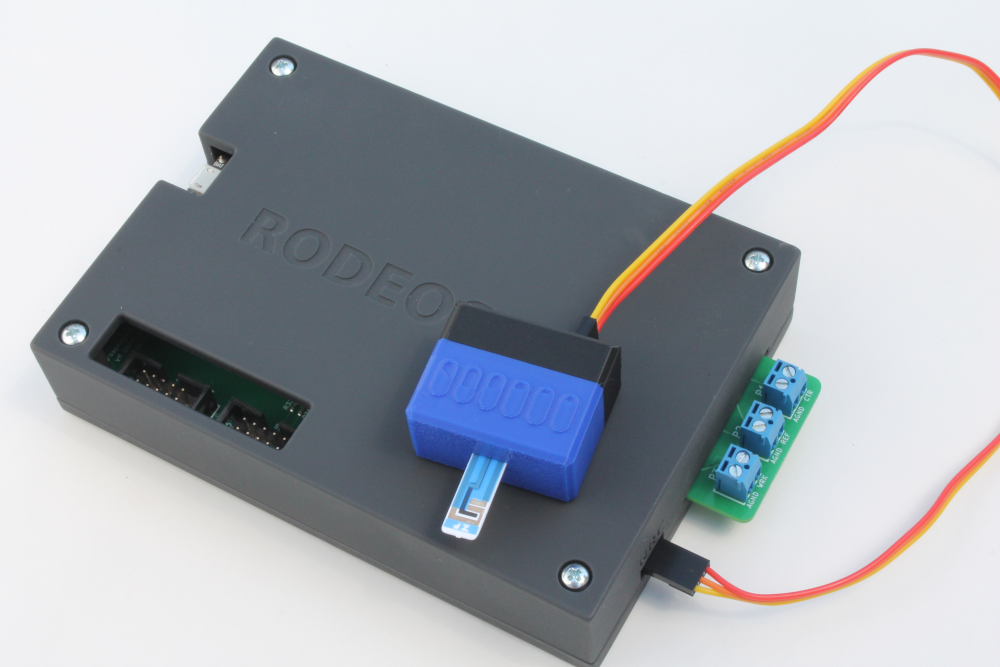
Rodeostat cyclic voltammetry parameters
- Start: -400 mV
- End: 600 mV
- Scan rate: 100 mV/s
- Cycles: 3
Shown below are the data from the last two CV cycles for each experimental set-up. Data was low pass filtered using a forward-backward (zero phase delay) 8th order butterworth filter with cutoff frequency of 5Hz.
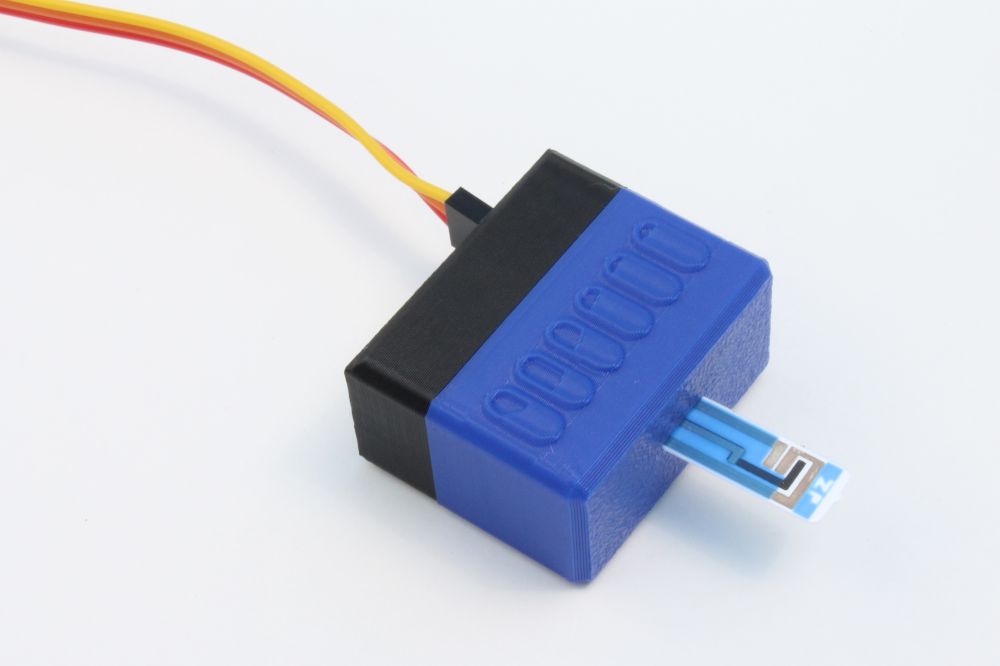
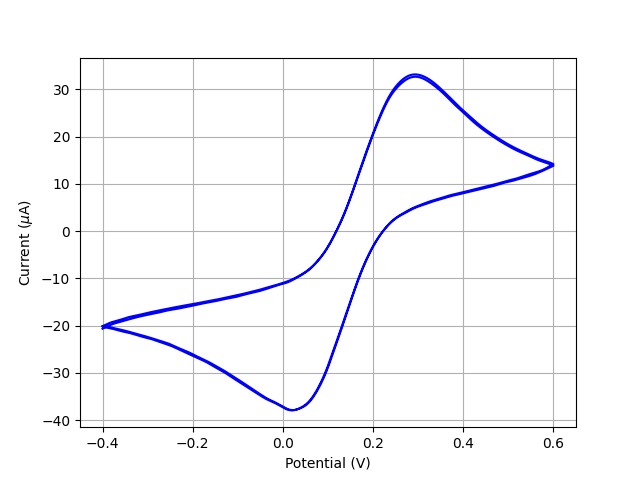
10mM potassium ferricyanide CV using the Rodeostat, new adapter & ZP Hypervalue carbon SPE
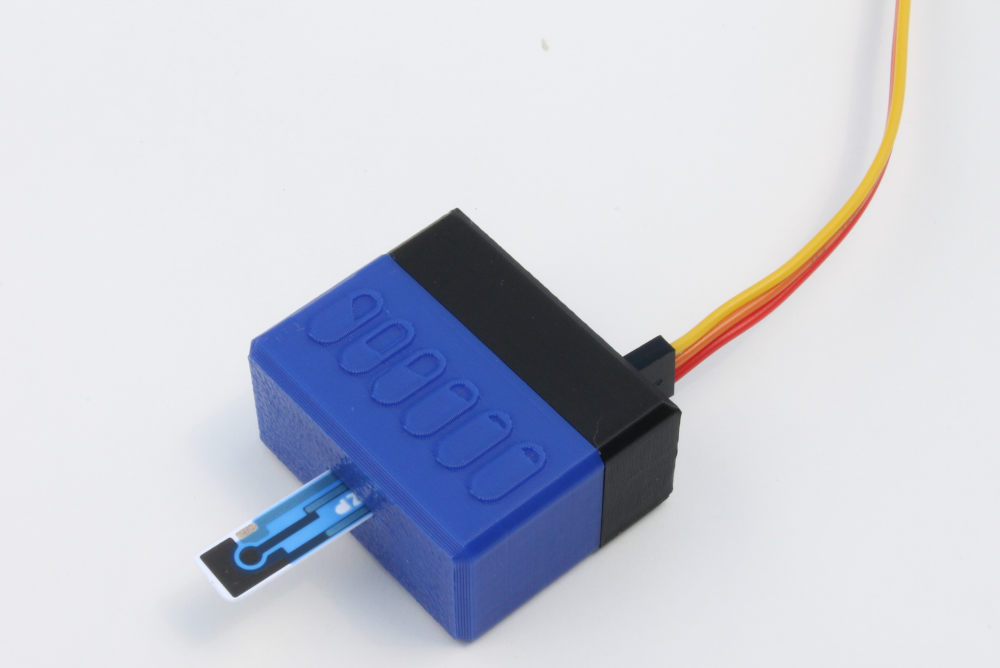
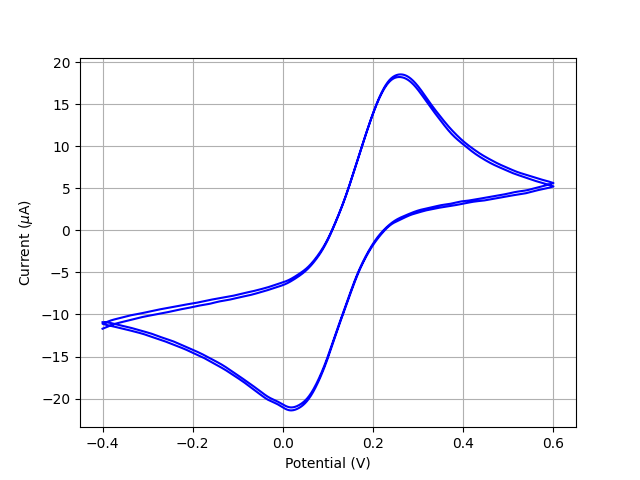
10mM potassium ferricyanide CV using the Rodeostat, new adapter & ZP Hypervalue 501 carbon SPE


10mM potassium ferricyanide CV using the Rodeostat & electrochemical cell (WE: 2mm platinum, RE: Ag/AgCl, CE: Platinum wire)
- Rodeostat, adapter & SPEs gave comparable results to the traditional 3-electrode electrochemical cell showing the classic reversible CV shape. The 3 different working electrodes do not have identical working electrode areas so there will be slight variations in current ranges
- Much smaller volumes of redox solution were consumed using the SPE experimental set-up than the electrochemical set-up
- SPE/adapter set-up is simpler and cleaner. The SPE is disposable so there is very little clean-up or maintenance whereas the metal working electrodes requires additional maintenance steps. The reusable metal electrodes should be polished to a mirror shine before and after experiments using a electrode polishing kit
Next Steps
Though designed for the ZP Hypervalue SPEs, the adapter described here can also be used with any SPE that has a similar dimension, pad spacing and R/W/C electrode configuration. We will continue to share any new SPE adapters as we develop them. If you are interested in making a custom open hardware SPE adapter, contact us here to connect with us.
Purchase Link
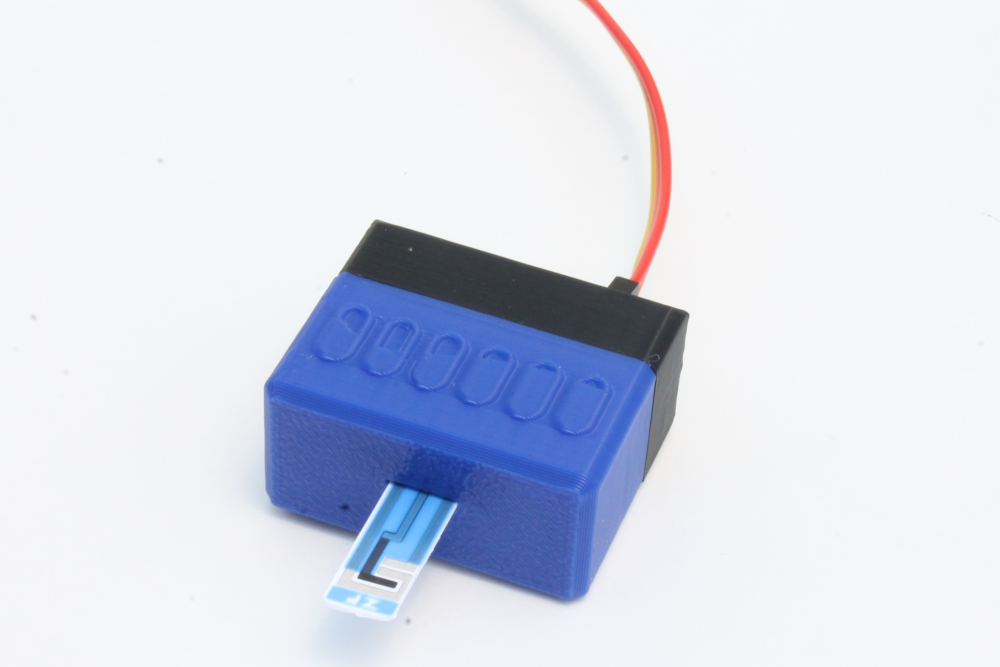




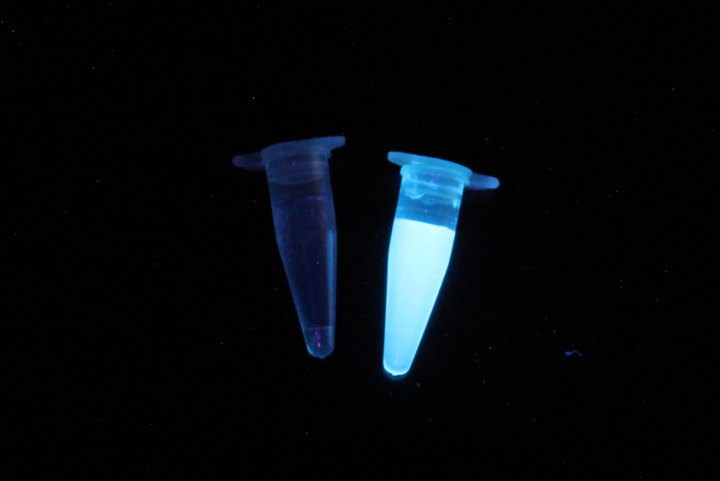
Comments ()